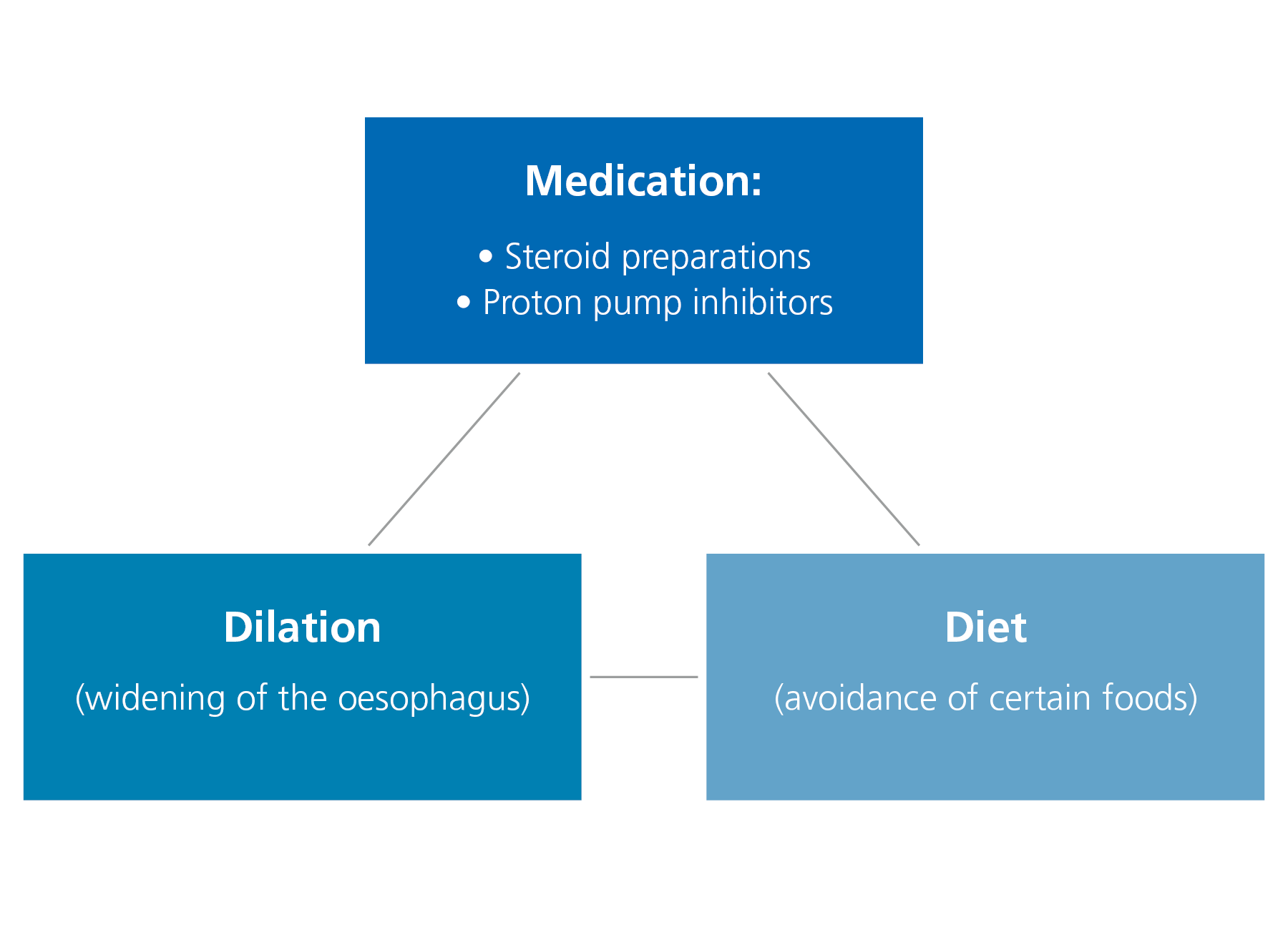SWALLOWING DIFFICULTIES:
EOSINOPHILIC OESOPHAGITIS?
SWALLOWING DIFFICULTIES:
EOSINOPHILIC OESOPHAGITIS?
SWALLOWING
DIFFICULTIES:
EOSINOPHILIC
OESOPHAGITIS?
How is eosinophilic oesophagitis treated?
There are currently four different treatment options for EoE: locally acting (topical) steroids, proton pump inhibitors (PPIs), diet and dilation. The doctor will normally discuss these options with you so you can decide together whether locally acting steroids, PPIs or diet is best for you.
How steroids and PPIs work is not completely clear. However, both appear to reduce the inflammation and the associated tissue damage in the oesophagus which causes the symptoms. A dietary approach is different as it focuses on eliminating a certain food or foods that causes an allergic reaction and the subsequent inflammation and tissue damage in the oesophagus. In some people, environmental factors may cause this allergic response, possibly independent of food, and dietary approach may not be effective for them). These foods or environmental factors are called allergens.
If someone with EoE experiences significant ongoing symptoms while receiving one of these three treatments, their doctor might decide that they should undergo an endoscopic-based procedure, known as a dilation, that stretches and widens the oesophagus. You normally get immediate symptomatic relief from a dilation. However, this procedure doesn’t have an effect on the underlying disease process in the oesophagus and you will need ongoing treatment with swallowed locally acting (topical) steroids, PPI or diet. Read more…
The use of local steroids, PPIs or diet are all first line, with the actual treatment commonly decided between the physician and the patient in consultation, based on the lifestyle etc of the individual patient. Dilation is an acute procedure requiring an endoscope and is only used when symptom relief is not achieved with the drugs/diet, or more acutely in a patient with a food bolus obstruction requiring endoscopic extraction owing to a narrowing (stricture) in the oesophagus . It will achieve rapid symptom relief, but the underlying pathology remains and the reason why the same drug or diet treatment should continue or switch to one of the two other treatments, if the physician, in consultation with the patient, believes this is a better approach for the patient.

Your gastroenterologist will probably order a follow-up endoscopy to assess the effect of a newly prescribed treatment on your oesophagus. The timing of the follow-up will depend on the type of treatment you receive and will be determined by your gastroenterologist.
The type of treatment you undergo will depend on the inflammatory phase of your condition. You will receive medication and an allergen-free diet for the initial inflammatory phase. In the inflammatory plus fibrotic phase, when narrowing of your oesophagus has occurred, you will undergo an endoscopy procedure for dilation.
Initial inflammatory phase
Acute inflammation is mostly treated with medication and diet. These also help to minimise the high risk of your oesophagus narrowing and the potentially irreversible scarring that is associated with EoE that has not been treated for a long time.
Inflammatory plus fibrotic phase
If the diagnosis has been delayed or the condition does not respond to medication and/or diet, severe narrowing of the oesophagus can occur. If this happens, you will need an endoscopic procedure to carefully widen the narrowed section of the oesophagus. This procedure is called a dilation and is normally carried out under sedation. You will be given pain relief after the procedure and for several days afterwards. Pain and other symptoms usually disappear two to three days after the procedure, but symptoms may come back over time.
Ongoing treatment
EoE cannot be cured with the current treatments. However, it is very important that you remain on the treatment prescribed by your gastroenterologist. Without this treatment, even if you don’t experience any symptoms initially, you risk ongoing inflammation and other adverse changes in your oesophagus as well as progression of the condition. It is important that you attend all appointments with your doctor so they can monitor your condition. After you have started a new treatment, your doctor will probably want to see you for a follow-up endoscopy to see what effect it is having. The timing of the follow-up will depend on the type of treatment you receive and will be determined by your gastroenterologist.
